RAISING TESTICULAR CANCER AWARENESS AND HOW TO SELF EXAMINE YOURSELF TODAY!!! - ***THIS ARTICLE CONTAINS GRAPHIC ILLUSTRATIONS OF THE HUMAN BODY***
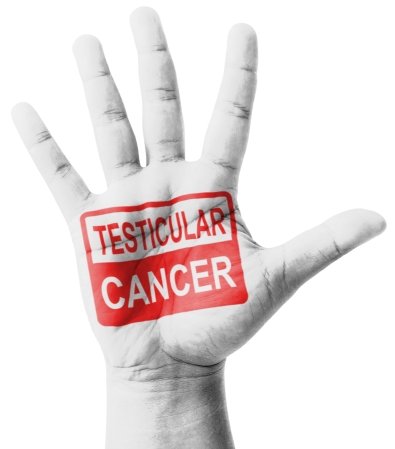
You see very often on different media, news and articles raising awareness about cancers such as breast, ovarian, colon and prostate but very rarely do you hear anything about the number one cancer in men aged 20-39 years old. Testicular cancer, even though not extremely common, has shown an increase in incidence during the last years. For example seminoma, a type of testicular tumor, has shown an increase in incidence by 124% towards the end of the 20th century. 50% of testicular cancer occurs in men aged 20-34 years old, but it can occur at almost any age. There are approximately 8.000 new cases per year in the US alone and about 10,000 men worldwide will die from testicular cancer in 2017. There is some good news though. Testicular cancer has one of the highest cure rates of all cancers, especially if discovered early. With proper therapy, up to 95% of patients are expected to be alive after 5 years. It is very important therefore for men to be aware of the symptoms of testicular cancer and it is our responsibility as men to know how to examine our own bodies for signs of this disease. This article will briefly describe these signs and symptoms, talk about how testicular cancer is diagnosed and treated and finally there will be a short description on how each man can examine his own testicles at home.
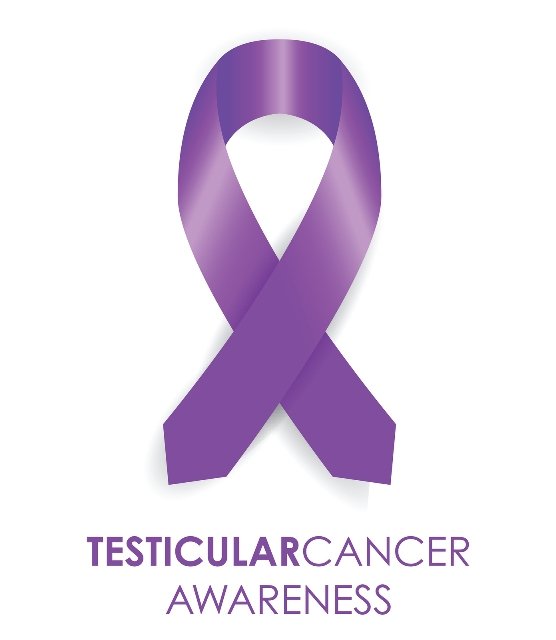
SIGNS AND SYMPTOMS
The most common and usually first sign of testicular cancer is painless swelling of a testicle or the presence of a mass (usually a nodule/lump). This highlights again the importance of self examination. Pain, even though not common, can be present and it usually presents as a dull ache or a feeling of ‘heaviness’ in the scrotum or lower abdomen. If the cancer has metastasized, other symptoms may be present such as: presence of a neck mass, nausea, vomiting, back pain, chest pain, coughing blood and gynecomastia. But don’t be alarmed. Swelling, pain and lumps on testicles can be caused by a variety of other diseases such as epididymitis, orchitis, hemato/varicocele, hernia, testicular torsion etc. The only way to know exactly what you have is to visit your doctor as soon as you discover anything unusual with your testicles.
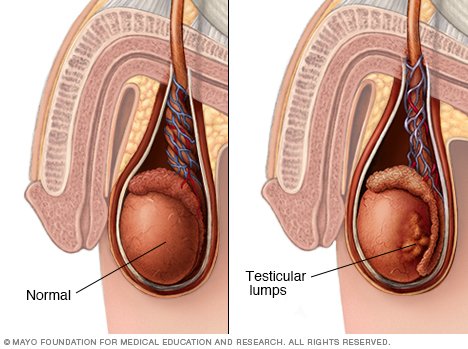
DIAGNOSIS
Any patient with a lump on his testicles has to be considered for testicular cancer. Diagnosis is usually straight forward. After a history taking and physical examination, your doctor will likely order some specific blood tests which can help confirm the diagnosis. Additionally various imaging studies may be used such as a scrotum ultrasound, a CT scan and even a chest x-ray. Usually the most accurate method for doctors to tell exactly what type and stage of testicular tumor you have is a histological examination of the testicle after an orchiectomy (removal of the testicle). Biopsies are almost never done since they increase the chances that the disease spreads. Surrounding lymph nodes may also be removed to examine for possible metastasis and help doctors decide on the appropriate treatment.
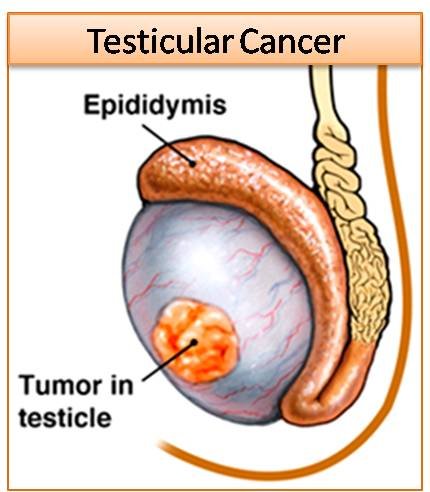
TREATMENT
In most cases the whole affected testicle is removed in a procedure called Radical Inguinal Orchiectomy. An incision is made in your lower abdomen and the testicle (together with the spermatic cord) is removed. Lymph nodes may also be removed. The lump is never removed alone since in such cases the recurrence rates are quite high. Chemotherapy or radiotherapy may be added as a therapy option especially if the cancer has spread to other regions of the body. Even in such cases, testicular cancer is highly responsive to chemotherapy and cure rates are still quite high. Despite the fact that reproduction is still possible in men with just one testicle, in most cases sperm banking is offered as an option since chemotherapy can potentially damage sperm production in the remaining testicle.
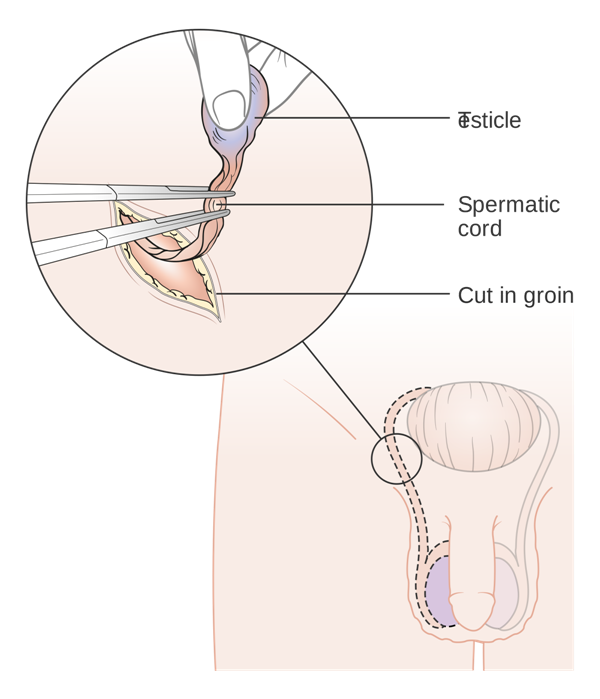
SELF EXAMINATION
It is suggested to examine yourself at least once every month. Very frequent (eg everyday) examination should be avoided since any changes in your testicles will be more difficult to notice. It is better to examine yourself after a warm shower. The hot water helps the scrotum and muscles in the area to relax and your testicles will drop lower and it will be much easier to examine them. The process is quite easy:
- First you should place the palm of your hand under both testicles and gently feel them. Try to observe their weight and size. Repeating this every time will help you to know your own body better.
- Examine each testicle separately. Gently roll the testicle between the fingers and thumb of one hand. Try to feel all surfaces of it. The testicles should feel relatively soft to the touch and not painful with a gentle pressure. It is normal for the testicles to be slightly different in size or for one of them to hang lower than the other.
- Try to feel any lumps on the surface of the testicles. Remember that sometimes the scrotum may contain small lumps itself, so make sure that you are not touching those by mistake. Lumps can be very small and almost feel like tiny rocks on your testicles or can be bigger like the size of a pea. Remember that on the back side of your testicles you can find a structure called the epididymis. It is common to confuse that for a lump so be careful (the epididymis will feel like a soft, rope like structure). A suspicious lump should appear to be 'attached' on the surface of your testicle and cannot be moved around with your fingers.
- If you notice anything suspicious or if you are in doubt about something you felt, contact your doctor as soon as possible. Do not wait for it to 'go away on its own'.
It is believed that up to 70% of testicular cancer patients can be diagnosed earlier if proper home self examination is being done by all men. There is nothing embarrassing about looking after your own body, so as the poster below says, don't be ashamed and just check 'em!!
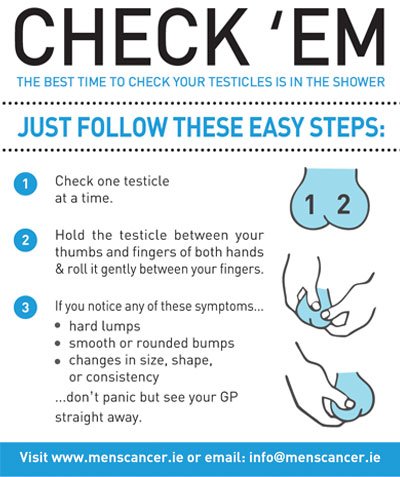
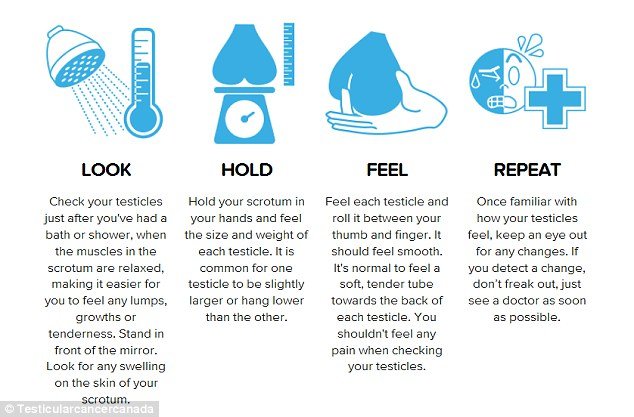
If you are a Dr Oz. fan you can check out this video:
=====================================================================
Sources:
http://emedicine.medscape.com/article/279007-overview
https://en.wikipedia.org/wiki/Testicular_cancer
http://kidshealth.org/en/teens/tse.html
=====================================================================
For more articles like this but also on many other subjects, follow me @nulliusinverba

Thank you for this information. I will be sharing it with my husband. More people really should be informed for early detection, even if it's an uncomfortable topic for people.
I hope the husband will listen to you!! Men are sometimes quite...difficult when it comes to looking after themselves. But you are right, early detection is the most important step to getting the right treatment on time.
I have a feeling that it's kind of the mindset of women before they get a breast exam...it's not something one might normally fondle...and certainly not anything you want a stranger to squeeze.
I understand exactly what you mean! I worked in a surgery department for almost a year and the Breast Clinic was also our responsibility. So I know how uncomfortable it can be...But still necessary.
I know a guy who is 22 years old, and he has just come through surgery and chemo therapy for testicular cancer. He was married a few years ago. Such a lot for a young childless couple to go through! I believe self-checks are so needful even for the teenagers. I also know of someone who had surgery and chemotherapy in his teens.
Self-check is one of the most valuable weapons we have against testicular cancer. I hope your friends have made or will make a full recovery!